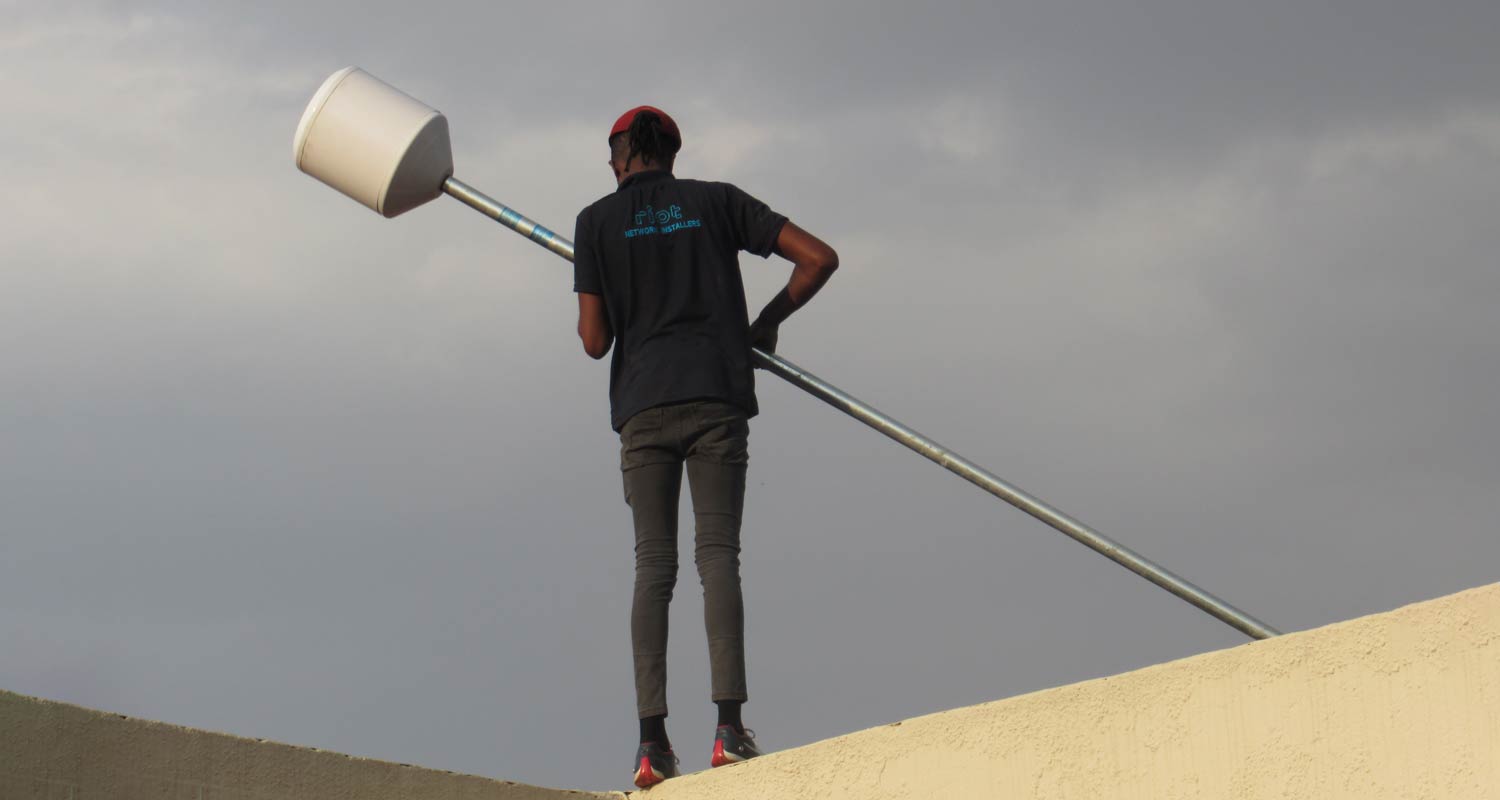Despite widespread smartphone ownership, the lack of dependable fixed broadband in rural communities continues to entrench disparities in education, healthcare and economic opportunity.
Yet solutions already exist: government-funded, locally developed innovations that can deliver affordable, high-impact connectivity while keeping ownership and expertise right here at home. It’s time to shift from inventing technology to deliberately deploying it.
The image of South African officials pleading with Elon Musk for Starlink to serve rural police stations, schools and clinics speaks volumes, not of external hope, but of our own failure of vision, resolve and confidence.
Starlink may dazzle, but South Africa is far from a technological wasteland. We already have proven cost-effective broadband technologies capable of closing the rural digital gap. Our true barrier is not a lack of inventions but a chronic absence of political will and institutional commitment to roll out sovereign solutions. South Africa now stands at a pivotal moment: will we invest in our own innovations or continue to rely on outside handouts?
The homegrown heroes gathering dust
South Africa has invested millions in research and development, yielding world-class technologies primed for rural connectivity:
TV White Space (TVWS)
The CSIR’s geolocation spectrum database allows for unlicensed use of vacant TV frequencies (“white spaces”) in the 470-694MHz band. Dynamic spectrum allocation is arguably the most promising solution for vast, terrain-challenged rural areas.
It leverages unused spectrum between TV channels, offering significant advantages such as long range signals travelling upwards of 15km and easily covering dispersed rural settlements from a single base station. Unlike traditional Wi-Fi or microwave, TVWS signals penetrate foliage and buildings, making the technology ideal for communities nestled in valleys or behind obstacles. By utilising unlicensed (or lightly licensed) spectrum, it drastically reduces capital expenditure compared to licensed spectrum or fibre trenching. Local small businesses are empowered as equipment is off-the-shelf and easily installed and maintained by small operators.
Read: Vumatel’s R99 uncapped fibre now a commercial product
In collaboration with the Kagiso Trust and AdNotes, the CSIR has already connected 26 schools in the Sekhukhune East Education District, Limpopo, via TVWS, delivering reliable internet to learners who previously had none. In KwaZulu-Natal’s Harry Gwala District, seven TVWS sites now serve Sinevuso High School, Moses Kotane Institute and other public facilities, enabling digital classrooms, telemedicine and e-government services.
South Africa might consider exploiting the full potential of this technology and connect all its key critical assets.

FibrePoynt
Government investment has also flowed into FibrePoynt, a company specialising in innovative approaches to community-owned fibre networks. FibrePoynt’s flagship offering leverages high-gain, passive beam-forming antennas and corridor-coverage beam-shaping techniques to deliver reliable fixed-wireless broadband from elevated access points directly to homes and businesses, eliminating the need for costly fibre trenching and cutting last-mile infrastructure expenses by over 50%.
The turnkey FibrePoynt Core solution integrates seamlessly with existing backhaul (fibre or microwave) to extend connectivity into underserved peri-urban and township areas without new civil works, while the consumer-focused HomePoynt service using simple rooftop antennas in a peer-to-peer mesh network to offer uncapped Wi-Fi from as little as R89/month, making affordable, high-performance broadband accessible and scalable across low-income communities.
FibrePoynt has pioneered an inclusive internet service provision model that trains and partners with local entrepreneurs to install, maintain and operate network nodes. In this model, at least 20% of generated revenue remains within the host communities, fostering skills development and ownership.
Riot Network
Beyond TVWS, government seed funding supported Riot Network, a homegrown community-operated broadband model. Riot Network’s flagship offering, CrowdNet, is powered by MediaTek’s Filogic 830 system-on-a-chip – an energy-efficient, Wi-Fi 6-ready platform built for mesh networking devices that’s packaged into easy-to-install core nodes that automatically link to form a self-healing mesh across neighbourhoods. Community members purchase and mount a gateway node that connects to uncontended backhaul (for example, 5G fixed-wireless or point-to-multipoint links), then host “core” and “leaf” nodes on their rooftops, earning a share of the R89/month stokvel-style subscription paid by up to 50 households in their vicinity.

The mesh network dynamically routes traffic between nodes and back to the gateway, delivering uncapped, high-performance broadband without towers or fibre trenching – keeping both operational costs and end-user prices exceptionally low. To date, Riot has more than 685 sites including several ECD centres and the Olievenhoutbosch Library.
The stinging irony: funded, developed, ignored
Here lies the profound contradiction and the core of our national failure: the same government that funds the CSIR supports entities like Fibrepoynt and invests in foundational technologies like Riot’s demonstrates “zero adoption of these technologies” for its own critical infrastructure.
This is not just inefficiency – it’s a betrayal of national potential and a violation of the spirit of our own policies. The draft South African Startup Act (a crucial policy framework currently being finalised) explicitly recognises this failure and mandates change. Section 4, called “Strategic interventions”, has clauses focusing on “demand-side support” and “public procurement”, is designed to address this exact issue. It proposes mechanisms to:
- Facilitate market access for start-ups through public procurement – like mandating government entities to procure locally developed tech solutions like TVWS for school connectivity.
- Implement measures to stimulate demand for innovative goods and services from start-ups – for example, directing Universal Service Fund money towards deploying Adnotes/Fiberpoynt/Riot solutions).
- Promote the adoption of innovative solutions developed by start-ups in addressing public sector challenges, such as connecting clinics and police stations with sovereign tech.
The Startup Act implicitly – and often explicitly – argues that government must be the first and primary customer for the innovations it funds to create viable markets, support small businesses and achieve strategic sovereignty. Our current trajectory of funding development then ignoring the product renders these investments wasteful and demoralises the very innovators we need.

Beyond the terminal
The appeal for Starlink highlights a deeper malaise: the allure of the quick foreign fix over the harder work of building domestic capacity. While satellite broadband has a role, especially in very remote areas, deploying Starlink terminals is a consumption model, not a development strategy. It exports capital and entrenches dependency.
If Starlink wants to operate in South Africa and connect government sites, the demand must be far more sophisticated than just handing over terminals. South Africa must insist that Starlink, or any similar foreign provider, commits to:
- Building the local space economy: This would require meaningful investment in the local manufacturing of components or ground station infrastructure, not just sales offices.
- Technology transfer and skills development: Concrete partnerships with the South African National Space Agency (Sansa), universities and local small businesses for skills transfer, joint R&D and participation in the satellite value chain.
- Supporting sovereign ambitions: Actively collaborating with Sansa and local industry to accelerate South Africa’s own satellite development, manufacturing and launch capabilities. We have capabilities; we lack the decisive investment and speed.
The way forward
South Africa’s connectivity challenge in rural areas is solvable. We have the technologies – TVWS for wide-area coverage, FibrePoynt for community fibre, Riot for resilient mesh networks. They are proven, cost-effective (far cheaper than incumbent network operators’ infrastructure and Starlink subscriptions), and developed on our own soil. What we lack is the intentionality to use them.
We must:
- Mandate government adoption: Enforce procurement policies (as envisioned in the Startup Act) that prioritise deploying locally developed, government-funded technologies like TVWS, FibrePoynt and Riot solutions for all public sector connectivity projects (schools, clinics, police stations).
- Unlock the Universal Service Fund (USF): Redirect USF investment decisively towards scaling these sovereign technologies and supporting the small businesses that deploy them, rather than perpetuating failed models.
- Support small businesses relentlessly: Provide not just grants but guaranteed markets, streamlined regulations and access to funding for deployment.
- Invest assertively in sovereign space: If satellite broadband is deemed essential, then government must significantly accelerate investment in Sansa and partner with local industry to build, launch and operate our own constellation, creating jobs and true technological sovereignty.
- Negotiate from strength with Starlink: Demand tangible, measurable contributions to building local space manufacturing, skills and R&D as a condition for market access, moving beyond mere service provision.
Read: GigZone: MTN launches uncapped wireless internet for R5/day
Begging for Starlink while our own world-class solutions gather dust is not just embarrassing, it’s economically and strategically suicidal. It says we lack faith in our own engineers, our own innovators and our own capacity for self-determination. We have the technologies, the talent and the policies (like the Startup Act) pointing the way. What we need now is courage, the will and the fierce intentionality to choose ourselves. The future of our rural communities, our small businesses and our technological sovereignty depends on it.
Get breaking news from TechCentral on WhatsApp. Sign up here.
- The author, Sipho Dikweni, is an entrepreneur, author, podcaster and blogger. Although he works at the CSIR, where is commercialisation manager, he writes here in his personal capacity



